|
Books Should Be Free Loyal Books Free Public Domain Audiobooks & eBook Downloads |
|
|
Books Should Be Free Loyal Books Free Public Domain Audiobooks & eBook Downloads |
|
Biographies |
|---|
|
Book type:
Sort by:
View by:
|
By: Experience Mayhew (1673-1758) | |
|---|---|
 Indian Converts of Martha's Vineyard, in New-England
Indian Converts of Martha's Vineyard, in New-England
This work is actually two "essays" which circulated together, one addended to the other. The first, Indian converts: or, Some account of the lives and dying speeches of a considerable number of the Christianized Indians of Martha's Vineyard, in New-England, is written by Experience Mayhew. Experience was one in a long line of missionary ministers to the Wampanoag Indians on Martha's Vineyard. This work is essentially a treasure trove of small biographies of Native Americans and their amazing faith in God, despite enormous persecution by their fellow man... | |
By: F. J. Foakes-Jackson (1855-1941) | |
|---|---|
 Social Life in England 1750-1850
Social Life in England 1750-1850
In 1916, the Cambridge historian, F.J. Foakes-Jackson braved the wartime Atlantic to deliver the Lowell Lectures in Boston. In these wide-ranging and engaging talks, the author describes British life between 1750-1850. There are John Wesley's horseback peregrinations over thousands of miles of English countryside. Next, Foakes-Jackson introduces the mordant rural poet, George Crabbe, who began life as a surgeon apothecary and ended up as a parish rector who made house calls. He gives us a female convict, assorted Cambridge University dons, Regency fops and rakes, and Victorian slices of life from Dickens and Thackeray... | |
By: Fanny Stenhouse (1829-1904) | |
|---|---|
 ''Tell It All'': The Story of a Life's Experience in Mormonism
''Tell It All'': The Story of a Life's Experience in Mormonism
Fanny relates the experiences of a 19th century missionary as she and her young husband proselytize throughout Europe in search of converts to the new Mormon faith. Her religious zeal is sorely tested upon receipt of news from America revealing that their religion has adopted the practice of polygamy as the means to exaltation. The couple is summoned to Utah only to find themselves firmly ensconced in Brigham Young's inner circle and called upon to practice plural marriage or risk a fall from family, friends, and faith. - Summary by Spiffycat | |
By: Ferdinand Schmidt (1816-1890) | |
|---|---|
 George Washington
George Washington
Among all the numerous life stories written by Ferdinand Schmidt for the delectation and education of German youth, none surpasses that of Washington. The author has condensed his material, drawn from the most authoritative sources, in a masterly manner, and presents it in a very attractive form. He has accompanied it by moralization which is pertinent, but never becomes tedious. It is questionable, indeed, whether any story of Washington’s life written for young people excels Schmidt’s in accuracy, conciseness, and general interest... | |
By: Flavius Josephus (37 - c.100) | |
|---|---|
 Minor Works of Josephus
Minor Works of Josephus
There are 3 parts to this collection.(1) Against Apion is a two-volume defense of Judaism as classical religion and philosophy, stressing its antiquity, as opposed to what Josephus claimed was the relatively more recent tradition of the Greeks. Some anti-Judean allegations ascribed by Josephus to the Greek writer Apion, and myths accredited to Manetho are also addressed.(2) Discourse To The Greeks Concerning Hades describes the author's views on the afterlife against the prevailing view of the "Greeks" (i... | |
By: Flavius Philostratus | |
|---|---|
 The Life of Apollonius of Tyana
The Life of Apollonius of Tyana
Apollonius of Tyana (ca. 40-120 AD) was a Greek Pythagorean philosopher and teacher. He hailed from the town of Tyana in the Roman province of Cappadocia in Asia Minor. His date of birth is a matter of conjecture as some say he was roughly a contemporary of Jesus.After Apollonius' death his name remained famous among philosophers and occultists. In a "novelistic invention" inserted in the Historia Augusta, Aurelian, at the siege of Tyana in 272, was said to have experienced a visionary dream in which Aurelian claimed to have seen Apollonius speak to him, beseeching him to spare the city of his birth... | |
By: Florence Mary Capes (1845-1932) | |
|---|---|
 St. Rose of Lima: The Flower of the New World
St. Rose of Lima: The Flower of the New World
Saint Rose of Lima, T.O.S.D. (April 20, 1586 – August 24, 1617), was a Spanish colonist in Lima, Peru, who became known for both her life of severe asceticism and her care of the needy of the city through her own private efforts. A lay member of the Dominican Order, she was the first person born in the Americas to be canonized by the Catholic Church. | |
By: Frances A. Fuller Victor (1826-1902) | |
|---|---|
 Eleven Years in the Rocky Mountains and Life on the Frontier
Eleven Years in the Rocky Mountains and Life on the Frontier
This lively book follows the adventures of mountain man Joe Meek, from his joining the Rocky Mountain Fur Company trapping expedition in the year 1829 at the young age of 18, through his retirement from public life after serving as Marshall of Oregon Territory. Meek had close connections with many famous people of the era, such as Kit Carson, William and Milton Sublette, Jedediah Smith, Marcus and Narcissa Whitman, Dr. John McLaughlin, Oregon’s Governor Lane, and President James Polk. The author’s information came directly from interviews with Joe himself... | |
By: Frances Alice Forbes (1869-1936) | |
|---|---|
 Life of St. Vincent de Paul
Life of St. Vincent de Paul
Vincent De Paul [c. 1581 - 1660] was a man renowned during his own century for his compassion, humility and generosity. During the days when galleys were part of any countries' war machine and these galleys were rowed by convicts who were in reality slaves, Vincent's special call was to provide what spiritual comfort he could to these wretched men. When a young man he himself had been captured by Turkish pirates, who brought him to Tunis and sold him into slavery, so he had a special understanding of their lot... | |
 Saint Athanasius: The Father of Orthodoxy
Saint Athanasius: The Father of Orthodoxy
A short and rather old fashioned biography a great saint. Don't expect subtlety; it's unapologetic hagiography. The saint is presented as a figure of pristine brilliance, courage and integrity and his persecutors as conniving villains. But to those who appreciate what was at stake in the controversy, Athanasius is indeed a God-sent hero. This is an informative, if quaint, introduction to a fascinating figure in history. | |
 Life of Saint Columba Apostle of Scotland
Life of Saint Columba Apostle of Scotland
Saint Columba (521 – 597) was an Irish abbot and missionary credited with spreading Christianity in present-day Scotland. He founded the important abbey on Iona, which became a dominant religious and political institution in the region for centuries. He is the Patron Saint of Derry. He was highly regarded by both the Gaels of Dál Riata and the Picts, and is remembered today as a Christian saint and one of the Twelve Apostles of Ireland.Columba reportedly studied under some of Ireland's most prominent church figures and founded several monasteries in the country... | |
 Pope Pius the Tenth
Pope Pius the Tenth
Pope Saint Pius X (2 June 1835 – 20 August 1914), born Giuseppe Melchiorre Sarto, was Pope from 4 August 1903 to his death in 1914. He was the first pope since Pius V (1566 to 1572) to be canonized. St. Pius X is known for vigorously opposing modernist interpretations of Catholic doctrine, promoting traditional devotional practices and orthodox theology. His most important reform was to publish the first Code of Canon Law, which collected the laws of the Church into one volume for the first time. He was also considered a pastoral pope, in the sense of encouraging personal holiness, piety and a daily lifestyle reflecting deep Christian values. | |
 Life of Saint Monica
Life of Saint Monica
| |
 Life of St. Teresa
Life of St. Teresa
Teresa of Ávila, also called Saint Teresa of Jesus, baptized as Teresa Sánchez de Cepeda y Ahumada (28 March 1515 – 4 October 1582), was a prominent Spanish mystic, Roman Catholic saint, Carmelite nun, an author of the Counter Reformation and theologian of contemplative life through mental prayer. She was a reformer of the Carmelite Order and is considered to be a founder of the Discalced Carmelites along with John of the Cross.In 1622, forty years after her death, she was canonized by Pope Gregory XV and on 27 September 1970, was named a Doctor of the Church by Pope Paul VI... | |
 Life of St. Ignatius of Loyola
Life of St. Ignatius of Loyola
Saint Ignatius of Loyola (1491– 1556) was a Spanish knight from a local Basque noble family, hermit, priest since 1537, and theologian, who founded the Society of Jesus (Jesuits) and was its first Superior General. After being seriously wounded in the Battle of Pamplona in 1521, he underwent a spiritual conversion while in recovery. De Vita Christi by Ludolph of Saxony purportedly inspired Loyola to abandon his previous military life and devote himself to labour for God. He died in July 1556, was beatified by Pope Paul V in 1609, canonized by Pope Gregory XV in 1622, and declared patron of all spiritual retreats by Pope Pius XI in 1922. | |
 Life of Saint Paul
Life of Saint Paul
A short biography of Saint Paul, the Apostle of the Gentiles, from the time of his persecution of the Christians to his martyrdom. | |
 Saint Benedict
Saint Benedict
Saint Benedict of Nursia (c. 480 – 543 or 547) is honoured by the Catholic Church as the patron saint of Europe and students. Benedict founded twelve communities for monks at Subiaco, Italy (about 40 miles (64 km) to the east of Rome), before moving to Monte Cassino in the mountains of southern Italy. One of his most well known achievement is his "Rule of Saint Benedict", containing precepts for his monks. He is often called the founder of western monasticism. | |
By: Frances M. A. Roe | |
|---|---|
 Army Letters from an Officer's Wife, 1871-1888
Army Letters from an Officer's Wife, 1871-1888
"There appeared from the bushes in front of me, and right in the path, two immense gray wolves . . . Rollo saw them and stopped instantly, giving deep sighs, preparing to snort, I knew . . . To give myself courage, I talked to the horse, slowly turning him around . . . when out of the bushes in front of us, there came a third wolf! The situation was not pleasant and without stopping to think, I said ‘Rollo, we must run him down - now do your best’ and taking a firm hold of the bridle, and bracing myself in the saddle, I struck the horse with my whip and gave an awful scream... | |
By: Frances Ridley Havergal (1836-1879) | |
|---|---|
 Kept for the Master's Use
Kept for the Master's Use
The memoirs of Frances Ridley Havergal, a great missionary and hymn writer. | |
By: Francis Asbury (1745-1816) | |
|---|---|
 Journal of Francis Asbury, Volume III
Journal of Francis Asbury, Volume III
As one of the first two bishops of the Methodist church in America and one of the most well-known circuit riders during the spread of Methodism, Francis Asbury kept a journal of his travels and activities. His journal begins with his prayerful decision to come to America in 1771 and continues to December of 1815, a few months before his death. In the meantime, we travel with Rev. Asbury across the ocean, over mountains, through rivers, and up and down the whole length of the fledgling United States of America. - Summary by Devorah Allen | |
 Journal of Francis Asbury, Volume II
Journal of Francis Asbury, Volume II
As one of the first two bishops of the Methodist church in America and one of the most well-known circuit riders during the spread of Methodism, Francis Asbury kept a journal of his travels and activities. His journal begins with his prayerful decision to come to America in 1771 and continues to December of 1815, a few months before his death. In the meantime, we travel with Rev. Asbury across the ocean, over mountains, through rivers, and up and down the whole length of the fledgling United States of America. Summary by Devorah Allen | |
By: Francis Johnson (1837-1908) | |
|---|---|
 Famous Assassinations Of History
Famous Assassinations Of History
It has been the object of the writer to make each of these “famous assassinations” the central scene of a picture in which the political, religious, or national features of the epoch in which the assassination occurred are portrayed with historical fidelity and strict impartiality…. Only those assassinations have been included which either had an important and political bearing on the world, or on the nation immediately affected, or which left a profound, and, it would seem, indelible impression on the imagination of contemporaries and posterity. - Summary by Book Preface | |
By: Francis Tiffany (1827-1908) | |
|---|---|
 Life of Dorothea Lynde Dix
Life of Dorothea Lynde Dix
A biography of a woman who advocated for the humane treatment of people with mental illness. As a young woman travelling overseas, Dorothea Dix met with people who were interested in reforming how the mentally ill were treated. Returning to America, she pushed for changes and proper care for these individuals, meeting with strong resistance. Her work ultimately resulted in social reform and the creation of asylums. Dorothea Dix was a tireless crusader and instrumental in important social reforms in the United States and the world. - Summary by Phyllis Vincelli | |
By: Frank Berkeley Smith (1869-1931) | |
|---|---|
 Real Latin Quarter
Real Latin Quarter
"Cocher, drive to the rue Falguière"--this in my best restaurant French. The man with the varnished hat shrugged his shoulders, and raised his eyebrows in doubt. He evidently had never heard of the rue Falguière. "Yes, rue Falguière, the old rue des Fourneaux," I continued. Cabby's face broke out into a smile. "Ah, oui, oui, le Quartier Latin." And it was at the end of this crooked street, through a lane that led into a half court flanked by a row of studio buildings, and up one pair of dingy waxed steps, that I found a door bearing the name of the author of the following pages--his visiting card impaled on a tack... | |
By: Frank Harris | |
|---|---|
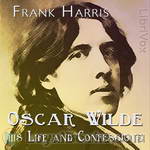 Oscar Wilde: His Life and Confessions
Oscar Wilde: His Life and Confessions
Consumers of biography are familiar with the division between memoirs of the living or recently dead written by those who “knew” the subject more or less intimately, and the more objective or scholarly accounts produced by later generations.In the case of Wilde, as presented to us by Frank Harris, we are in a way doubly estranged from the subject. We meet with Oscar the charismatic talker, whose tone of voice can never be reproduced – even if a more scrupulous biographer had set down his words accurately – and we are perhaps already aware of him as Wilde the self-destructive celebrity who uneasily fills the place of the premier gay icon and martyr in our contemporary view... | |
By: Frank Henderson | |
|---|---|
 Six Years in the Prisons of England
Six Years in the Prisons of England
A Merchant talks about daily life inside prisons of England, describes routines and how prisoners are treated. He notes stories of how fellow prisoners came to be in prison, and his ideas about the penal system, its downfalls and ways to improve it. The reader can see similarities to the problems we still have in regarding "criminals" today. (Introduction by Elaine Webb) | |
By: Frank Lewis Dyer and Thomas Commerford Martin | |
|---|---|
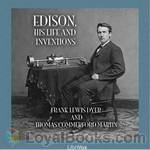 Edison, His Life and Inventions
Edison, His Life and Inventions
One of the most prolific and multi-talented geniuses the world has ever seen, Thomas Alva Edison's life is indeed an inspiration for each new generation. Today we live in a world that would not have been possible if not for several of his important inventions – the electric light bulb, the motion picture camera, electric power distribution, the phonograph, and a host of other things that we take for granted today. In fact, he still holds the world record for the maximum number of patents, numbering 1093 in all! Edison – His Life and Inventions by Frank Lewis Dyer and Thomas Commerford Martin, published in 1910 was in fact a biography commissioned by Edison himself... | |
By: Frank Mundell (1870-1932) | |
|---|---|
 Story of Edison and The Wonders of Electricity
Story of Edison and The Wonders of Electricity
Despite not having attended conventional school for more than a few months during his childhood, Thomas Alva Edison received a good grounding in the essential subjects of reading, writing and arithmetic at home from his mother . Edison took the knowledge gained from these subjects and combined it with an insatiable curiosity, a fascination with all aspects of technology, an indomitable spirit and a passion to overcome any problem or seize any opportunity that circumstance might present him with to eventually become one of the finest inventors the world has ever seen... | |
By: Frank Puterbaugh Bachman (1871-1934) | |
|---|---|
 Great Inventors and Their Inventions
Great Inventors and Their Inventions
This book is about Great inventors and what they created. It has different stories like Alexander Bell, Wrights, Morse, Gutenberg, and Edison. ON August 17, 1807, a curious crowd of people in New York gathered at a boat landing. Tied to the dock was a strange-looking craft. A smokestack rose above the deck. From the sides of the boat, there stood out queer shaped paddle wheels. Of a sudden, the clouds of smoke from the smokestack grew larger, the paddle wheels turned, and the boat, to the astonishment of all, moved... | |
By: Frank W. Boreham (1871-1959) | |
|---|---|
 Handful of Stars
Handful of Stars
This is the second of a five volume series called "Texts That Made History". As with the first volume, "A Bunch of Everlastings", each chapter tell a brief biography with emphasis on the text from scripture that was significant in the life of each. It is biography and Bible study expertly woven together to produce interesting and inspirational stories. | |
 Bunch of Everlastings
Bunch of Everlastings
A collection of brief biographies and the text from scripture that was significant in the life of each. It is biography and devotional Bible study expertly woven together to produce interesting and inspirational stories. | |
By: Franklin Benjamin Sanborn (1831-1917) | |
|---|---|
 Henry D. Thoreau
Henry D. Thoreau
A biography of the famous and popular poet-naturalist, author, philosopher, historian, written by a family friend who spent time with Thoreau almost daily during the last seven years of his life and who knew and talked with members of his family. Written shortly after his death, it was immediately popular and this later edition gained a new audience. | |
By: Franz Hoffmann (1814-1882) | |
|---|---|
 Mozart's Youth
Mozart's Youth
This short account of the young Wolfgang Amadeus Mozart is part of the “Life Stories for Young People” series. It is written in an engaging dialogue format beginning with the young Mozart’s first notes on the piano keyboard at age three to his admission to membership in the Accademia Filarmonica at Bologna, Italy, ten years later. This child prodigy astounded the musical world of Europe to become one of the most cherished of all classical composers. | |
By: Franz Blei (1871-1942) | |
|---|---|
 Recollections of Oscar Wilde
Recollections of Oscar Wilde
This 1906 collection of memories of Oscar Wilde is by friends. Wilde said that his genius was his life; only his talent was in his works. | |
By: Fred Kelly (1882-1959) | |
|---|---|
 Wright Brothers
Wright Brothers
This is a biography of the Wright Brothers as told by the American humorist and newspaperman Fred Kelly, a personal friend of the Wrights. It is described in reviews as "fascinating and highly readable." - Summary by Ciufi Galeazzi | |
By: Frederick Adams Woods (1873-1939) | |
|---|---|
 Mental and Moral Heredity in Royalty. A Statistical Study in History and Psychology
Mental and Moral Heredity in Royalty. A Statistical Study in History and Psychology
Frederick Adams Woods examined the biographical records and family trees of the great dynasties of Europe, judging and comparing their moral standards and intellectual aptitude to their reputation as rulers. The summarised family histories are produced after a painstaking search including portrait galleries, family lineage, comparisons of reputation, and the origin of allegations of madness and moral bankruptcy, all collated within a single volume. - Summary by Leon Harvey | |
By: Frederick Bridge (1844-1924) | |
|---|---|
 Twelve Good Musicians: From John Bull to Henry Purcell
Twelve Good Musicians: From John Bull to Henry Purcell
Brief sketches of the lives and music of 12 well-known musicians. - Summary by KevinS | |
By: Frederick Douglass (1818-1895) | |
|---|---|
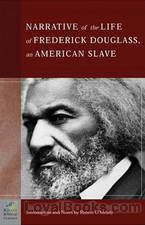 Narrative of the Life of Frederick Douglass
Narrative of the Life of Frederick Douglass
Frederick Douglass was born into slavery on a Maryland plantation. He faced hardship as a child, but later encountered owners who were relatively liberal and allowed him to learn to read, write and be in contact with freed slaves. At the age of 20, he escaped from the plantation and made his way to New York. Though he remained a fugitive, he married and changed his name to avoid being caught. He continued his education and became involved in the Abolitionist Movement. He began touring the country, speaking passionately about the unjust, cruel and inhuman practice of slavery... | |
By: Frederick James Furnivall (1825-1910) | |
|---|---|
 Shakespeare: Life and Work
Shakespeare: Life and Work
William Shakespeare: actor, poet, playwright. He is often called England's greatest writer, the Bard of Avon, a national treasure. But who was he? An average boy, born to an average family of the period; a romantic and dreamer, tempted away from his rural home by the sights and sounds of the big city. To commemorate the 400th anniversary of William Shakespeare's death, here is one of the many studies of the bard's life and works. | |
By: Frederick Trevor Hill (1866-1930) | |
|---|---|
 Lincoln, The Lawyer
Lincoln, The Lawyer
This biography of Abraham Lincoln focuses on his practice as a lawyer. | |
By: Frederick Wedmore (1844-1921) | |
|---|---|
 Four Masters of Etching
Four Masters of Etching
Frederick Wedmore presents short vignettes of influential artists of the 19th century who were noted for their mastery of etching: Seymour Haden, Jules Jacquemart, J. A. M. Whistler, and Alphonse Legros. - Summary by Larry Wilson | |
By: Frederick Winthrop Hutchinson | |
|---|---|
 Men Who Found America
Men Who Found America
This Book is about the Men Who Found America and how it started - Summary by Elijah | |
By: Frederika Richardson Macdonald | |
|---|---|
 Secret of Charlotte Brontë
Secret of Charlotte Brontë
Twenty years ago, now, I attempted (but was not especially successful in the task) to establish upon the personal knowledge that my own residence as a pupil in the historical Pensionnat in the Rue d'Isabelle, at Bruxelles gave me of the facts of Charlotte Brontë's relationships to Monsieur and Madame Heger, right impressions about the experiences and emotions she underwent between 1842 and 1846, and that supply the key and clue to the right interpretation of her genius. Every opinion I then ventured... | |
By: Friedrich Nietzsche (1844-1900) | |
|---|---|
 Case of Wagner / Nietzsche Contra Wagner / Selected Aphorisms
Case of Wagner / Nietzsche Contra Wagner / Selected Aphorisms
A collection of three of Nietzsche's writings concerning the music of Wagner. In particular, he relates Wagner's music as degenerate, unrefined and unintelligent and relates it to a gradually degenerating German culture and society. The translator provides a detailed introduction. | |
By: G. F. Young (1846-1919) | |
|---|---|
 Medici, Volume 2
Medici, Volume 2
This work relates the history of the Medici family through three centuries and eleven generations, from its rise from obscurity, to its zenith of power and influence, to its eventual decay and ruin. It outlines their history in conjunction with the major events of Europe and dwells much on the artists and artworks patronized by the Medici - the impetus of the Renaissance. This second volume begins in 1537 and highlights Catherine, the last of the elder branch, then follows the younger branch to the eventual extinction of the family in 1743. - Summary by TriciaG | |
 Medici, Volume 1
Medici, Volume 1
This work relates the history of the Medici family through three centuries and eleven generations, from its rise from obscurity, to its zenith of power and influence, to its eventual decay and ruin. It outlines their history in conjunction with the major events of Europe and dwells much on the artists and artworks patronized by the Medici - the impetus of the Renaissance. This first volume brings to life the Renaissance and how Florence, through the Medici, was the epicentre of the movement that spread new learning throughout Europe... | |
By: G. K. Chesterton (1874-1936) | |
|---|---|
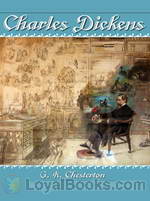 Charles Dickens
Charles Dickens
G. K. Chesterton was a great admirer of Charles Dickens, and wrote a noted critique of Dickens’ works expressing his opinion in his own inimitable style. | |
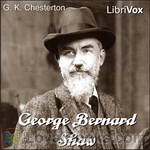 George Bernard Shaw
George Bernard Shaw
Chesterton and Shaw were famous friends and enjoyed their arguments and discussions. Although rarely in agreement, they both maintained good-will towards and respect for each other. However, in his writing, Chesterton expressed himself very plainly on where they differed and why. In Heretics he writes of Shaw: “After belabouring a great many people for a great many years for being unprogressive, Mr. Shaw has discovered, with characteristic sense, that it is very doubtful whether any existing human being with two legs can be progressive at all... | |
 St. Francis of Assisi (Version 2)
St. Francis of Assisi (Version 2)
Saint Francis of Assisi grew up in a wealthy family and his early life was characterized by splendor, riches and a lavish lifestyle. During an illness, he supposedly had a vision, after which he became disillusioned with his lifestyle and began giving everything away to beggars. His conversion was gradual, but after a pilgrimage to Rome, he supposedly hid in a cave to avoid his father's anger and then began to live a life of poverty and contrition. He is forever associated with simplicity and nature. - Summary by Lynne Thompson | |
 Twelve Types
Twelve Types
Short biographical essays of twelve persons central to European culture. - Summary by KevinS | |
 St. Francis of Assisi
St. Francis of Assisi
For Chesterton, Francis of Assisi is a great paradoxical figure, a man who loved women but vowed himself to chastity; an artist who loved the pleasures of the natural world as few have loved them, but vowed himself to the most austere poverty, stripping himself naked in the public square so all could see that he had renounced his worldly goods; a clown who stood on his head in order to see the world aright. Chesterton gives us Francis in his world-the riotously colorful world of the High Middle Ages, a world with more pageantry and romance than we have seen before or since... | |
By: Gaius Suetonius Tranquillus (c75 - c160 AD) | |
|---|---|
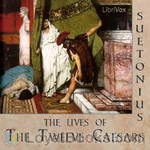 The Lives of the Twelve Caesars
The Lives of the Twelve Caesars
The Twelve Caesars is a set of twelve biographies of Julius Caesar and the first 11 emperors of the Roman Empire. The work was written in 121 during the reign of the emperor Hadrian, while Suetonius was Hadrian’s personal secretary. On the Life of the Caesars concentrates on the acts and personalities of the Julio-Claudians and their immediate successors. Together with Tacitus’ Annals, this work is a major source for the historical details in Robert Graves’ novels “I Claudius” and “Claudius the God”. | |
By: Geoffrey Chaucer (c. 1343-1400) | |
|---|---|
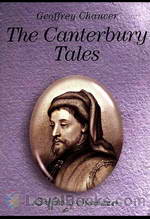 The Canterbury Tales
The Canterbury Tales
Anyone who has ever been on a package tour with a group of strangers who soon become friends, and passed time swapping stories with them, would instantly identify with this timeless classic of English literature. The Canterbury Tales by Geoffrey Chaucer recounts twenty different stories recounted by a diverse group of pilgrims who gather at The Tabard Inn in Southwark, near London, before setting out for the shrine of Thomas Becket in Canterbury. The Host of the inn proposes that they entertain themselves by telling stories along the route and the one who tells the best tale would win a prize – a meal at Bailey's tavern, sponsored by the losers... | |
By: George Bethune English (1787-1828) | |
|---|---|
 A Narrative of the Expedition to Dongola and Sennaar
A Narrative of the Expedition to Dongola and Sennaar
As a second lieutenant in the United States Marine Corps during the War of 1812 assigned to Marine Corps headquarters, English sailed to the Mediterranean, and was among the first citizens of the United States known to have visited Egypt. Shortly after arriving in Egypt he resigned his commission, converted to Islam and joined Isma'il Pasha in an expedition up the Nile River against Sennar in 1820, winning distinction as an officer of artillery. He published his Narrative of the Expedition to Dongola and Sennaar (London 1822) regarding his exploits. (Introduction adapted by obform from Wikipedia) | |
By: George Brinton McClellan (1826-1885) | |
|---|---|
 McClellan's Own Story
McClellan's Own Story
Memoirs of General George Brinton McClellan, commanding general of the Army of the Potomac during the early years of the American Civil War. The work covers the time that McClellan commanded the Army of the Potomac, including the Peninsula Campaign, the Seven Days' Battles, and the Battle of Antietam. | |
By: George Bruce Malleson (1825-1898) | |
|---|---|
 Life of Prince Metternich
Life of Prince Metternich
Klemens von Metternich first foreign minister, and then chancellor of the Austrian Empire was a great diplomat: crafty, manipulative, and single-minded in his determination to overthrow Napoleon and his revolutionary ideals and to reestablish the European monarchical system. In this short 1888 biography, the British officer, Colonel G. B. Malleson, describes how the charming, aristocratic Metternich devoted countless hours to winning Napoleon's trust and to buying time for his country, until a rearmed Austria, at the head of the Sixth Coalition, was able to defeat the still-formidable Corsican... | |
By: George Dewey (1837-1917) | |
|---|---|
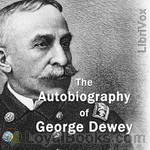 The Autobiography of George Dewey
The Autobiography of George Dewey
Admiral George Dewey, United States Navy, is best remembered for his victory over the Spanish fleet at the Battle of Manila Bay during the Spanish-American War (1898). Written when Dewey was seventy-five years old and had served fifty-nine years in the navy, this book offers not only an excellent account of the famous naval battle in the Philippines, but also stories of the author’s many adventures during his long sea-going career, including some hair-raising experiences during the Civil War. | |
By: George Iles (1852-1942) | |
|---|---|
 Little Masterpieces of Autobiography: Actors
Little Masterpieces of Autobiography: Actors
The playwright gives a play its plot, characters, dialog and form, but its sense of living reality is conveyed by the art of the actor. This fascinating collection of perspectives on acting is taken from biographies and autobiographies of American, British and Italian actors of the late 19th and early 20th centuries. John Wilkes Booth, an actor and the assassin of President Abraham Lincoln, is recalled by his brother, the great actor Edwin Booth, and by acclaimed actress Clara Morris. -- Lee Smalley | |
 Little Masterpieces of Autobiography - Writers
Little Masterpieces of Autobiography - Writers
Writers is Volume 4 of Library of Little Masterpieces of Autobiography in Six Volumes as published in 1913, and includes writings of Henry Wadsworth Longfellow, Edgar Allan Poe, Alfred Tennyson, Robert Burns, Walter Scott, Nathaniel Hawthorne, Charles Dickens, Charlotte Brontë, George Eliot, Robert Louis Stevenson and Henry George. The series includes letters, passages from autobiographies, and pages from diaries written by each of these. - Summary by J. M. Smallheer | |
By: George Macaulay Trevelyan (1876-1962) | |
|---|---|
 Garibaldi and the Making of Italy
Garibaldi and the Making of Italy
Giuseppe Garibaldi (1807-1882) was an Italian general and politician who played a large role in making of what Italy is today. He is known as one of Italy's "fathers of the fatherland". Garibaldi was a central figure in the Italian Risorgimento (Resurrection), and led the famous Expedition of the Thousand on behalf and with the consent of Victor Emmanuel II. The volunteers under his command wore red shirts as their uniform and became known in the popular stories as, "The Red Shirts."He gained his military expertise from his experiences in Brazil, Uruguay as well as Europe... | |
By: George Pearson | |
|---|---|
 The Escape of a Princess Pat
The Escape of a Princess Pat
Being the full account of the capture and fifteen months’ imprisonment of Corporal Edwards, of the Princess Patricia’s Canadian Light Infantry, and his final escape from Germany into Holland. | |
By: Georges Lacour-Gayet (1856-1935) | |
|---|---|
 Bismarck
Bismarck
Otto von Bismarck famously said, "The great questions of the day will not be settled by speeches or the decisions of the majority...but by iron and blood." Prince Bismarck unified the German states under Prussian hegemony through a series of carefully orchestrated wars, which excluded Austria from the new Confederation and added Schleswig-Holstein, and Alsace-Lorraine to Germany. But Bismarck avoided useless confrontations and was, above all, a master of balance of power diplomacy. His skills, both at home and abroad, won him the loyal support of Kaiser Wilhelm I... | |
By: Geraldine Edith Mitton (1868-1955) | |
|---|---|
 Jane Austen and Her Times
Jane Austen and Her Times
This is a lively and highly accessible overview of the life and times of one of England's most beloved authors. Using excerpts from a wide variety of sources, such as Austen's own personal correspondence and the works of her contemporaries, Mitton chronicles her literary career and family life amidst the changing climate of the Georgian and Regency eras, giving the reader a sense of what it was like to live in her world. A must-read for the dedicated Austen aficionado! - Summary by Tomas Peter | |
By: Geronimo (1829-1909) | |
|---|---|
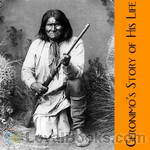 Geronimo’s Story of His Life
Geronimo’s Story of His Life
Geronimo’s Story of His Life is the oral life history of a legendary Apache warrior. Composed in 1905, while Geronimo was being held as a U.S. prisoner of war at Fort Sill, Oklahoma, Geronimo’s story found audience and publication through the efforts of S. M. Barrett--Lawton, Oklahoma, Superintendent of Education, who wrote in his preface that “the initial idea of the compilation of this work was . . . to extend to Geronimo as a prisoner of war the courtesy due any captive, i.e. the right to state the causes which impelled him in his opposition to our civilization and laws... | |
By: Giacomo Casanova (1725-1798) | |
|---|---|
 The Memoirs of Jacques Casanova
The Memoirs of Jacques Casanova
This is the first of five volumes. – Giacomo Casanova (1725 in Venice – 1798 in Dux, Bohemia, now Duchcov, Czech Republic) was a famous Venetian adventurer, writer, and womanizer. He used charm, guile, threats, intimidation, and aggression, when necessary, to conquer women, sometimes leaving behind children or debt. In his autobiography Histoire de ma vie (Story of My Life), regarded as one of the most authentic sources of the customs and norms of European social life during the 18th century, he mentions 122 women with whom he had sex... | |
By: Gilbert Burnet (1643-1715) | |
|---|---|
 Some Passages of the Life and Death of the Right Honourable John, Earl of Rochester
Some Passages of the Life and Death of the Right Honourable John, Earl of Rochester
I believe that the good Bishop of Salisbury's account of the last days of poor young Rochester would, if carefully read, make more impression on the mind of a fast young man than a hundred sermons from the pulpit would effect. Can anything, indeed, be sadder than that one so highly gifted with intellect, courage, and good looks as Wilmot Lord Rochester, should have left a name almost proverbial for all that is most dissipated and abandoned; and that a career which might have rivalled in the reign of Charles II... | |
By: Giles Lytton Strachey (1880-1932) | |
|---|---|
 Eminent Victorians
Eminent Victorians
On Modern Library's list of 100 Best Non-Fiction books, "Eminent Victorians" marked an epoch in the art of biography; it also helped to crack the old myths of high Victorianism and to usher in a new spirit by which chauvinism, hypocrisy and the stiff upper lip were debunked. In it, Strachey cleverly exposes the self-seeking ambitions of Cardinal Manning and the manipulative, neurotic Florence Nightingale; and in his essays on Dr Arnold and General Gordon, his quarries are not only his subjects but also the public-school system and the whole structure of nineteenth-century liberal values. | |
By: Giorgio Vasari (1511-1574) | |
|---|---|
 Lives of the Most Eminent Painters, Sculptors and Architects
Lives of the Most Eminent Painters, Sculptors and Architects
The Lives of the Most Excellent Italian Painters, Sculptors, and Architects, from Cimabue to Our Times, or Le Vite delle più eccellenti pittori, scultori, ed architettori, as it was originally known in Italian, is a series of artist biographies written by 16th century Italian painter and architect Giorgio Vasari, which is considered "perhaps the most famous, and even today the most- read work of the older literature of art", "some of the Italian Renaissance's most influential writing on art", and "one of the founding texts in art history"... | |
By: Giovanni Boccaccio (1313-1375) | |
|---|---|
 Early Lives of Dante
Early Lives of Dante
This recording contains two early biographies of Dante, both written by notable Florentine literati. Giovanni Boccaccio was an Italian poet, most famous for his monumental collection of tales, The Decameron. Like Dante, Boccacio was one of the first writers to use the Italian vernacular. Lionardo Bruni was an accredited historian and man of letters. His short biography was inspired by reading the version of Dante's life by Boccaccio, who he considered had mispresented Dante by over-emphasizing the influence of his association with Beatrice... | |
By: Grant Allen (1848-1899) | |
|---|---|
 Biographies of Working Men
Biographies of Working Men
Grant Allen was an anthropologist, scientific writer, novelist and poet, though the biographer and writer Frank Harris has said of him that "He could be described with more 'ists' than anyone else I ever saw. He was an atheist and pacifist and socialist, a botanist and zoologist and optimist, a chemist and physicist, a scientist of scientists, a monist, meliorist and hedonist…". As a novelist, he is noted as a pioneer in both the detective and science fiction genres. He was born in Canada but spent the latter part of his life in England... | |
By: Gustav A. Just (1847-1924) | |
|---|---|
 Life of Luther
Life of Luther
This short biography of Martin Luther, by Gustav Just, who taught at Bethlehem Evangelical Lutheran School, St. Louis, is a standard resource for students, young and old. The first five chapters give a swift moving, succinct overview of church history up to Luther’s time, and the final two chapters deal with the church after Luther’s death. Martin Luther is presented in a favorable, but objective light and his influence appreciated as the primary leader of the Reformation. - Summary by Larry Wilson | |
By: Gustav Kobbé (1857-1918) | |
|---|---|
 Loves of Great Composers
Loves of Great Composers
Gustav Kobbe was a German/US music critic who worked at the time of Liszt and Wagner in particular, and was clearly in the Wagnerian rather than the Brahms camp. His unusual style of writing and his strongly romantic take on the loves of these seven composers makes for entertaining listening, even though his facts and opinions may differ from more academic writers and biographers of these composers. Each composer occupies a section or chapter, with Wagner getting the fuller account in terms of length... | |
By: Hamilton Fyfe (1869-1951) | |
|---|---|
 Arthur Wing Pinero, Playwright - A Study
Arthur Wing Pinero, Playwright - A Study
A discussion about the life and works of the playwright Arthur Wing Pinero. The perfect accompaniment to the plays by Pinero available here at. - Summary by ToddHW | |
By: Hamilton Wright Mabie (1846-1916) | |
|---|---|
 The Mentor: Famous English Poets
The Mentor: Famous English Poets
This is Vol. 1, No. 44, Serial No. 44 of The Mentor, published in 1913. This edition of the Mentor Magazine focuses on six of England's most well-known poets - Lord Byron, John Keats, Percy Shelley, William Wordsworth, Alfred Tennyson and Robert Browning. | |
By: Hamlin Garland (1860-1940) | |
|---|---|
 Son of the Middle Border
Son of the Middle Border
In all the region of autobiography, so far as I know it, I do not know quite the like of Mr. Garland's story of his life, and I should rank it with the very greatest of that kind in literature. . . . It is the poet who sees the vast scale of human struggle with nature or the things she will withhold unless they are forced from her by man's tireless toil and mighty mechanism, and in the vision he knows a battle-joy as distinctive of this Son of the Middle Border as his fidelity to the sordid and squalid details of the campaign, or his exultation of the beauty of the West which he has so passionately hated and finally so passionately loves... | |
By: Handley Carr Glyn Moule (1841-1920) | |
|---|---|
 Charles Simeon
Charles Simeon
Charles Simeon had come up to King’s college from Eton, a wild undergraduate, famous for his love of horses and extravagance in dress; but one day he discovered that the rules of the college compelled him to receive the Communion on the following Sunday. He had lived in an utterly careless home, but he knew enough of religion to realise that attendance at the Lord’s Table was a serious thing, which should not be undertaken without some preparation. Not quite knowing what to do, he went to a bookseller’s shop, and bought a copy of Bishop Wilson on the Lord’s Supper, and learned from it for the first time the meaning of the Atonement... | |
By: Harold J. Laski (1893-1950) | |
|---|---|
 Karl Marx: An Essay
Karl Marx: An Essay
Born in Manchester in 1893, Harold Laski was a leading figure in the left-wing of British socialism in the first half of the 20th century. An executive member of the Fabian Society and member of the Socialist League faction of the Labour Party, he was party chairman in 1945-6. As a professor at the London School of Economics he influenced a number of prominent politicians of the post-war years, including leaders of the independence movements of Asia and Africa, and Ralph Milliband, father of the current Labour Party leader, Ed Milliband... | |
By: Harriet Beecher Stowe (1811-1896) | |
|---|---|
 Palmetto Leaves
Palmetto Leaves
After the Civil War, Harriet and her husband Charles bought an Orange Plantation in Mandarin, on the upper east coast of Florida, where they lived during the winter months. Over the years they expanded their cottage to accommodate many guests . They opened schools to educate and churches to care for the recently freed negros pouring into Florida seeking refuge and opportunity. These charming essays, each describing a largely undeveloped rural land, became one of the first travel guides written about Florida and stimulated the first boom of tourism and residential development to that area... | |
 Lady Byron Vindicated
Lady Byron Vindicated
In 1869, the Atlantic published Stowe's article, The True Story Of Lady Byron's Life, a brief exposé of the famous poet Lord Byron's sordid private life which had led to a separation from his wife and drove him out of England, as told to her by Lady Byron herself before her death. Stowe wrote this article long after Lady Byron's death, when Lady Byron‘s impeccable reputation was being smeared across Europe by Byron's influential literary friends, and her trustees were doing nothing to defend her... | |
By: Helen Keller (1888-1968) | |
|---|---|
 The Story of My Life
The Story of My Life
An autobiography of Helen Keller published when the author was still in her early 20's. The narrative reveals how her mind developed and matured until she began her studies at Radcliffe College | |
 The World I Live In
The World I Live In
The World I Live In by Helen Keller is a collection of essays that poignantly tells of her impressions of the world, through her sense of touch, smell, her imagination and dreams. My hand is to me what your hearing and sight together are to you. In large measure we travel the same highways, read the same books, speak the same language, yet our experiences are different. All my comings and goings turn on the hand as on a pivot. It is the hand that binds me to the world of men and women. The hand is my feeler with which I reach through isolation and darkness and seize every pleasure, every activity that my fingers encounter... | |
By: Helen Nicolay (1866-1954) | |
|---|---|
 Boys' Life of Abraham Lincoln
Boys' Life of Abraham Lincoln
The Boys’ Life of Abraham Lincoln is a biography with many anecdotes that takes one deeper into the thoughts, personality, and beliefs of the man that was Lincoln. While the title indicates the book is about Lincoln’s life as a boy, the book is a full, if somewhat shortened biography. It is very well written and was a joy to record. One might ask, "Who was Helen Nicolay?" Her father, John George Nicolay, was Abraham Lincoln's private secretary and doubtless much of the material comes from his complete biography of Abraham Lincoln. ( | |
By: Henrietta Elizabeth Marshall (1867-1941) | |
|---|---|
 Story of Napoleon
Story of Napoleon
This book gives an exciting account of Napoleon's rise to power. It opens with his humble beginning on the island of Corsica and ultimately emperor of over half of Europe. This book focuses on his victorious military campaigns, his disastrous Russian campaign, his exile to the island of Elba, his final loss at Waterloo, and his last days on the lonely island of St. Helena. Summary by pjcsaville. | |
By: Henry Bibb (1815-1854) | |
|---|---|
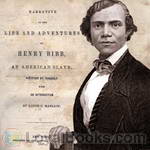 Narrative of the Life and Adventures of Henry Bibb, an American Slave
Narrative of the Life and Adventures of Henry Bibb, an American Slave
Henry Walton Bibb was born a slave. His father was white although his identity was not positively known. Bibb was separated from his mother at a very young age and hired out to other slave owners for most of his childhood. Always yearning for his freedom, he made his first escape from slavery in 1842. He was recaptured and escaped, recaptured and escaped over and over; but he never gave up on his desire to be a man in control of his own destiny. | |
By: Henry Brooks Adams (1838-1918) | |
|---|---|
 Education of Henry Adams
Education of Henry Adams
The Education of Henry Adams records the struggle of Bostonian Henry Adams (1838-1918), in early old age, to come to terms with the dawning 20th century, so different from the world of his youth. It is also a sharp critique of 19th century educational theory and practice. In 1907, Adams began privately circulating copies of a limited edition printed at his own expense. Commercial publication had to await its author's 1918 death, whereupon it won the 1919 Pulitzer Prize. (Introduction by Wikipedia) | |
By: Henry Cabot Lodge (1850-1924) | |
|---|---|
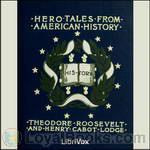 Hero Tales from American History
Hero Tales from American History
Its purpose … is to tell in simple fashion the story of some Americans who showed that they knew how to live and how to die; who proved their truth by their endeavor; and who joined to the stern and manly qualities which are essential to the well-being of a masterful race the virtues of gentleness, of patriotism, and of lofty adherence to an ideal. It is a good thing for all Americans … to remember the men who have given their lives in war and peace to the service of their fellow-countrymen, and to keep in mind the feats of daring and personal prowess done in time past by some of the many champions of the nation in the various crises of her history. | |
By: Henry David Thoreau (1817-1862) | |
|---|---|
 Walden
Walden
Two years, two months and two days! This is what forms the time line of one man's quest for the simple life and a unique social experiment in complete self reliance and independence. Henry David Thoreau published Walden in 1884. Originally drafted as a series of essays describing a most significant episode in his life, it was finally released in book form with each essay taking on the form of a separate chapter. Thoreau's parents were in financial straights, but rich intellectually and culturally... | |
By: Henry Duff Traill (1842-1900) | |
|---|---|
 William the Third
William the Third
William Henry, Prince of Orange and Nassau, Dutch William to the English, was born in a state threatened by the military ambitions of Louis XIV. “Reared from his very cradle amid the animosities of contending factions,” Traill writes, “the young Prince learned early those four lessons of statecraft,—to conceal his designs, to watch his opportunities, to choose his instruments, and to bide his time.” The Dutch Republic, distrustful of monarchs, reluctantly chose him as stadtholder to lead their armies, and then, after the overthrow of James II in 1688, he became with his consort, Mary, England’s king. | |
By: Henry Fielding (1707-1754) | |
|---|---|
 Journal of a Voyage to Lisbon
Journal of a Voyage to Lisbon
Sailing voyage from England to Portugal in the mid Eighteenth Century, by one of the premier humorists, satirists, novelists and playwrights of his age. It was to be his last work, as his failing health proved unable to persevere much longer after the voyage. | |
By: Henry James (1843-1916) | |
|---|---|
 Partial Portraits
Partial Portraits
In this book, writer Henry James gives wonderful and probing insights into the lives and works of many famous and interesting writers, some known personally by him. We see into the creative workings of Ralph Waldo Emerson, George Eliot, Anthony Trollope, Robert Louis Stevenson, Constance Fenimore Woolson, Alphonse Daudet, Guy De Maupassant, Ivan Turgenieff and George du Maurier. | |
By: Henry L. Williams | |
|---|---|
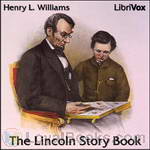 The Lincoln Story Book
The Lincoln Story Book
The Abraham Lincoln Statue at Chicago is accepted as the typical Westerner of the forum, the rostrum, and the tribune, as he stood to be inaugurated under the war-cloud in 1861. But there is another Lincoln as dear to the common people–the Lincoln of happy quotations, the speaker of household words. Instead of the erect, impressive, penetrative platform orator we see a long, gaunt figure, divided between two chairs for comfort, the head bent forward, smiling broadly, the lips curved in laughter, the deep eyes irradiating their caves of wisdom; the story-telling Lincoln, enjoying the enjoyment he gave to others. (from the preface of the book) | |
By: Henry Morgenthau (1856-1946) | |
|---|---|
 Ambassador Morgenthau's Story
Ambassador Morgenthau's Story
Ambassador Morgenthau’s memoirs of his years in the service of the United States in Constantinople, (today Istanbul), are an important primary historical resource for the study of the dissolution of the Ottoman Empire and the Armenian Genocide. During this genocide, approximately 1,500,000 Armenians living in Anatolia were murdered in an attempt to rid Turkey of its non-Turkish populations. Mr. Morgenthau left Turkey a frustrated man, having done all that he was able through diplomatic circles to halt the murders, to no avail... | |
By: Henry Offley Wakeman (1852-1899) | |
|---|---|
 Charles James Fox
Charles James Fox
Charles James Fox was a prominent British Whig member of Parliament and the arch-rival of William Pitt the Younger. A staunch opponent of George III, he supported the American colonists throughout the War of Independence. He was a leading parliamentary advocate of religious tolerance, individual liberty, and the anti-slavery cause. A notorious gambler and womanizer, Fox fell in love with and married Elizabeth Armistead, the former mistress of the Prince of Wales, and found happiness and tranquility in their home, St... | |
By: Henry Ossian Flipper (1856-1940) | |
|---|---|
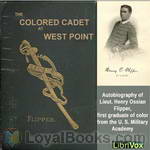 The Colored Cadet at West Point
The Colored Cadet at West Point
Henry Ossian Flipper--born into slavery in Thomasville, Georgia on March 21, 1856--did not learn to read and write until just before the end of the Civil War. Once the war had ended, Flipper attended several schools showing a great aptitude for knowledge. During his freshman year at Atlanta University he applied for admittance to the United States National Military Academy at West Point. He was appointed to the academy in 1873 along with a fellow African American, John W. Williams. Cadet Williams was later dismissed for academic deficiencies. | |
By: Henry Salt (1851-1939) | |
|---|---|
 Life of Henry David Thoreau
Life of Henry David Thoreau
Henry David Thoreau was a fascinating man, contributing vast amounts of information on nature history, leading the way for environmentalism. He also was a philosopher, abolitionist, anarchist, writer, poet, and a bit of a mystery. He is best known for his book 'Walden', and his essay on 'Civil Disobedience'. This early biography by Henry Salt is highly regarded by Thoreau scholars. - Summary by Phyllis Vincelli | |
By: Henry Watson Wilbur (1851-1914) | |
|---|---|
 President Lincoln's Attitude Towards Slavery and Emancipation
President Lincoln's Attitude Towards Slavery and Emancipation
A review of events prior to, during and following the American Civil War bringing an insightful perspective on Lincoln's true attitude toward slavery and emancipation. | |
By: Herbert Francis Peyser (1886-1953) | |
|---|---|
 Johann Sebastian Bach
Johann Sebastian Bach
Compared with the unimaginable richness of his inner life as the overpowering volume and splendor of his works reveal it, Bach’s day-to-day existence seems almost pedestrian.... The present volume, which advances no claim whatever to any new or original slant, aims to do no more than furnish for those who read and run a meager background of a few isolated highspots in Bach’s outward life and a momentary sideglance at a tiny handful of his supreme creations. Its object will have been more than accomplished if in any manner it stimulates a radio listener to deepen his acquaintance with Bach’s immeasurable art. - Summary by Author's Foreword | |
 Joseph Haydn; Servant And Master
Joseph Haydn; Servant And Master
Haydn, barring a few hardships in his youth, lived an extraordinarily fortunate life and had abundant reason for the optimism which marked every step of his progress.... Haydn was a master by the grace of Heaven and a servant only by the artificial conventions of a temporary social order... About the vast number of symphonies, the magnificent string quartets, the clavier works, the songs there can here be no question. - Summary by Author's Foreword | |
 Mendelssohn And Certain Masterworks
Mendelssohn And Certain Masterworks
In the compass of the present pamphlet it is impossible to give more than a cursory survey of Mendelssohn’s happy but extraordinarily crowded life. He was only slightly less prolific a composer than such masters as Bach, Mozart or Schubert, even if he did not reach the altitude of their supreme heights. But irrespective of the quality of much of his output, the sheer mass of it is astounding, the more so when we consider the extent of his travels and the unceasing continuity of his professional and social activities, which immensely exceeded anything of the kind in the career of Schubert or Bach. - Summary by Author's Foreword | |
 George Frideric Handel
George Frideric Handel
Handel’s long career resembles a gigantic tapestry, so bewilderingly crowded with detail, so filled with turmoil and vicissitude, with vast achievements, extremes of good and ill fortune, and unending comings and goings that any attempt to force even a small part of it into the frame of a tiny, unpretentious booklet of the present sort is as hopeless as it is presumptuous.... Handel was time and again a composer of exquisitely delicate colorations, and sensuous style, not to say a largely unsuspected master of many subtle intricacies of rhythm... | |